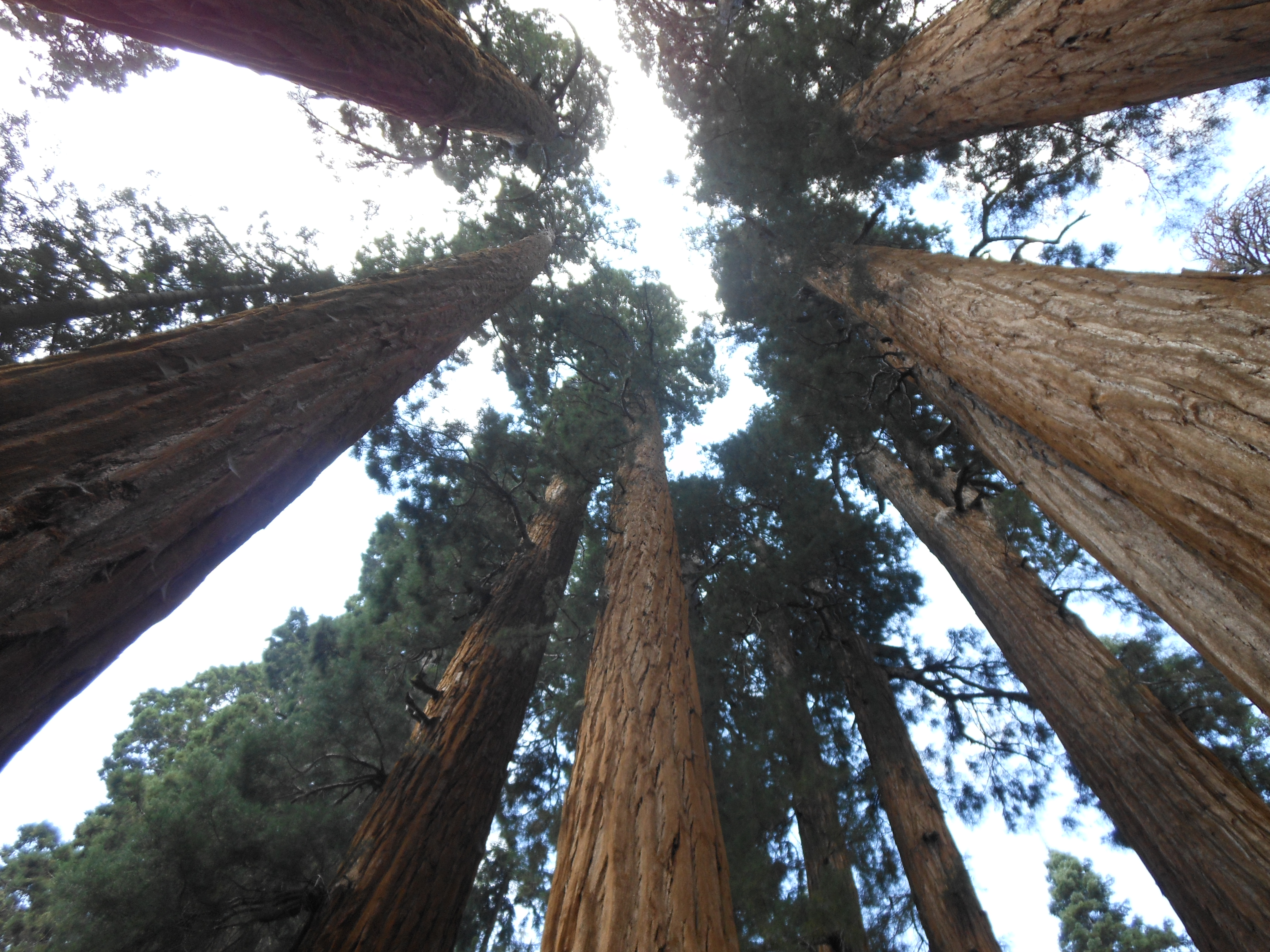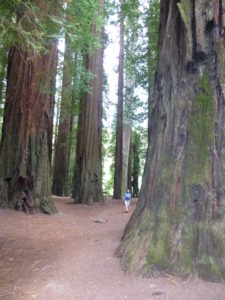
The gray winters of Portland often leave me looking – and yearning – both forward and back. Ahead, I imagine the adventures of the coming summer and its long, sun-filled days. Looking back, I often return to my family’s August 2012 trip to the oldest, the biggest and the tallest trees on Earth, a trip my pun-friendly parents christened “The Treefecta.”
We sandwiched our eco-tour between my sister’s wedding in Oregon and a cousin’s wedding in Southern California. Circumstances allowed both my parents and me to take off the two weeks between these family celebrations, so I traveled with my father (a forester, ecologist and incorrigible tree geek) and my mother (a primary school teacher with an eye for birdwatching).
Growing up in Montana, we often took trips to California to visit extended family. Yet somehow I had only been to one-third of the Treefecta as a child, and had been much too young to remember – an oddity given all the years of driving back and forth with a father more likely to pull over and inspect evidence of pine beetle damage or long-extinguished forest fires than to buy travel snacks.
Now, what began as a means of avoiding airfare for three quickly turned into a series of pilgrimages to forests I consider to be among the greatest wonders of the world.

The oldest
Our first destination was the Methuselah Grove in the Ancient Bristlecone Pine Forest, part of California’s Inyo National Forest in the eastern Sierra Nevada Mountains.
We camped just outside the east entrance to Yosemite National Park and drove about three hours through stunning scenery to reach these ancient wonders. Our journey took us south down Highway 395 through Bishop to Big Pine and east on Highway 168 to the Inyo Forest. Turning onto White Mountain Road, we followed the steep and winding route to a ridgeline, where we could look west across the Owens Valley to the Sierras.

Little did we know the wonders that awaited just down the trail – an amazing 4.5-mile, self-guided tour through what truly could be called the National Sculpture Gallery. Around every corner, we found another twisted, gnarled, multi-colored tree – each with more exposed wood than bark, more dead limbs than live.
Together, the 10,000-foot elevation, dry summers, harsh winters and limestone-derived soil allow minimal undergrowth and few animals beyond birds in this ancient grove. But somehow, these pines are alive. Indeed, the harsh environment helps to protect these elders. The sparse vegetation leaves little opportunity for wildfires to spread, and the winters are so cold that bark beetles can’t survive.
In this grove are some of the oldest trees in the world – indeed, these nearly 5,000-year-old bristlecone pines are the oldest living non-clonal beings on Earth. Through dendrochronology (linking rings on live and dead trees), the grove’s tree rings provide a record dating back 9,000 years or more. The location of the oldest pine in the grove, named Methuselah, is kept a secret, but that only makes the exploration more intriguing.
We stopped and marveled, pointing out every strange twist, and marveling at trunks wider than I am tall on trees that often topped out shorter than a city boulevard tree or a fruit tree in a grove. We took photos frenetically, even though we knew our talents and equipment couldn’t do justice to these wondrous beings. We barely had a chance to feel winded by the elevation, so much did our tour seem like strolling through a museum, albeit one curated by wind and time, with commentary from a Clark’s nutcracker.

The biggest
After a few days in Yosemite, we drove south to Sequoia National Park, just east of Visalia, Calif., to devote ourselves to the next stage of our tree geekery.

There, we strolled among the relatively young (a mere 3,500 years), giant sequoias. These trees are the most massive tree species in the world, and their largest, dubbed General Sherman, is the largest living thing on Earth. At 1,385 tons, it is 10 times the size of a blue whale and weighs the equivalent of 230 African elephants. At 113 feet around, its footprint is more than 1,000 square feet, a veritable two-bedroom apartment, if you will.
The interpretive signs in the park made all kinds of comparisons to help us wrap our heads around the enormity of these trees. Even for those smaller than General Sherman, the height difference between a mouse and a 6-foot-tall person is analogous to the scale of these mature giant redwoods to that same person.
Strangely, it wasn’t until I started looking at photographs of myself standing next to some of these trees that I realized just how tiny we humans are by comparison. Even then, I wasn’t entirely appreciative. Then we found the multiple “rooms” inside several trees, where the interiors had burned out, and my father and I stood inside the trunk with our arms outstretched, barely spanning the gap with our combined arm spans.
The giant sequoias are accessible by car and short strolls, on crowded paths of about one-half mile, or along longer trails of 2 to 3 miles with far fewer encounters with fellow explorers.

The tallest
We made it to the final stop in our pilgrimage after my cousin’s wedding in Santa Barbara. We drove back north up the California coastline on Highway 1 and then 101, through Humboldt Redwood State Park, to reach the coastal redwood groves just south of the little town of Weott.
Here, we drove along the Avenue of the Giants, a 31-mile stretch of road that branches off and then reconnects with Highway 101, weaving through these magnificent trees, stopping and walking among the groves. What once would have seemed like the widest, most massive trees I had ever encountered now seemed slender after our time with the sequoias.

Even so, the redwoods completely dwarf other tree species in the area and certainly make anything in the Rocky Mountains seem like twiggy saplings. They can also live more than 2,000 years, a span brief only in comparison to the bristlecone. The coastal redwoods mostly range from 200 to 240 feet in height, although the tallest reach more than 370 feet. That’s four times the height of a mature lodgepole pine and 150 feet better than the Statue of Liberty.
Walking through the redwood groves, it was dizzying (and fruitless) to try and see the treetops. Where the bristlecone were life-size bonsai trees and the giant sequoias were a city of living buildings, the redwoods were pillars in a green cathedral, disappearing into the fresco of their canopy. The redwood forest moved and sighed in a way the other two didn’t; the tree trunks visibly swayed with the breeze, the lush undergrowth rustled with our passing.
Reflection
Having reached each of our waypoints, we turned toward Oregon once more and soon picked up the rhythm of normal life. It’s a wonder that these three impressive and singular forests are all within California, and all open to the public. What a gift that we might visit the ancient, the giant, and the towering. Having completed my Treefecta pilgrimage, I wholeheartedly recommend the experience.













Great article, especially since I knew Dave before he knew about Forestry.
Great article! Very informative. And now I can prove to my family I’m not the only major tree geek in the country.